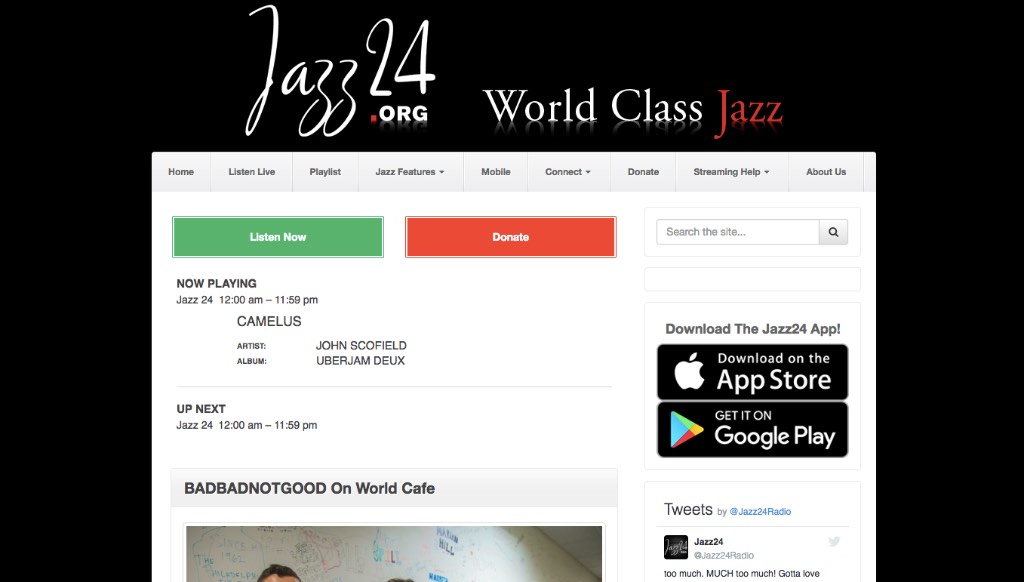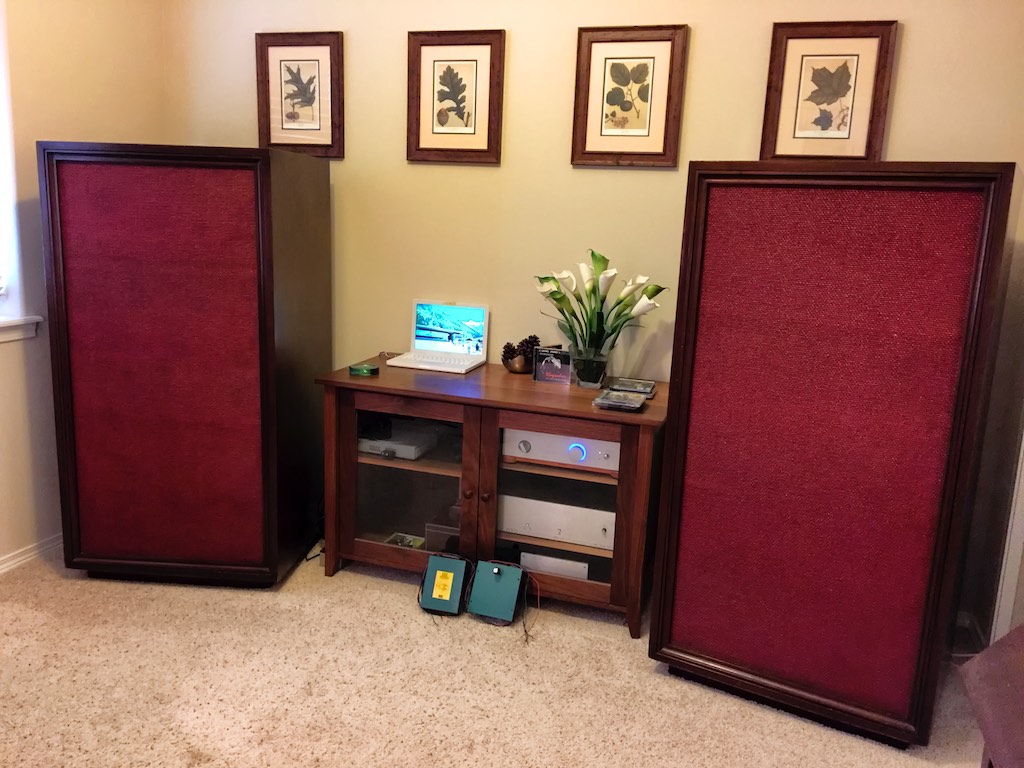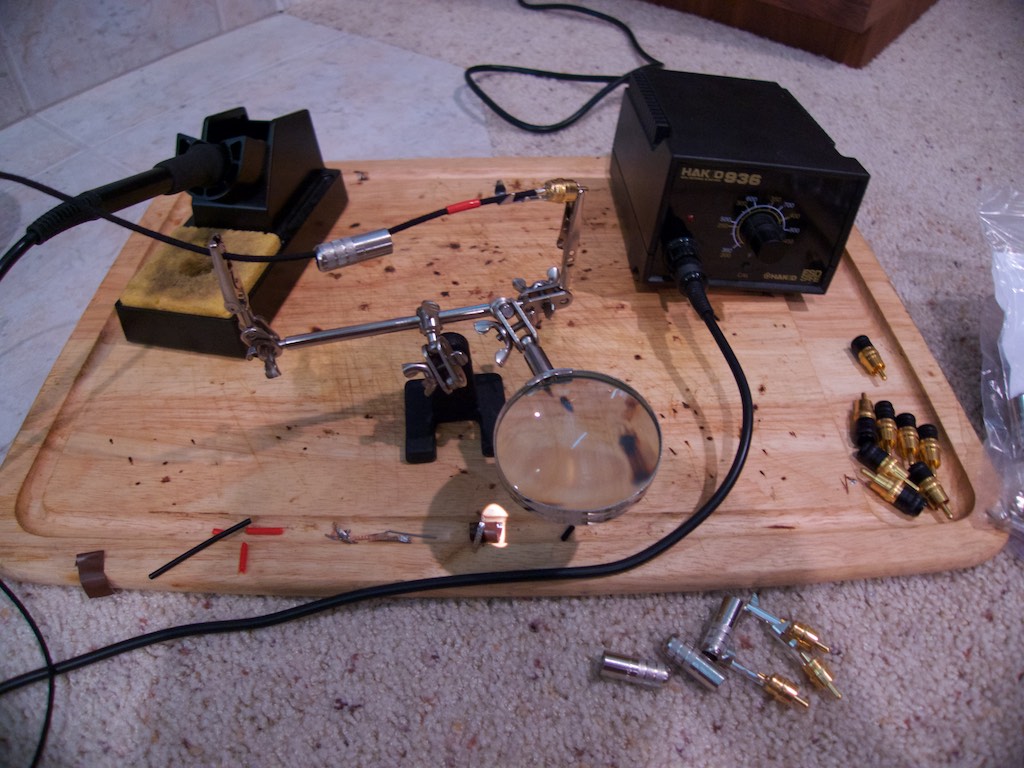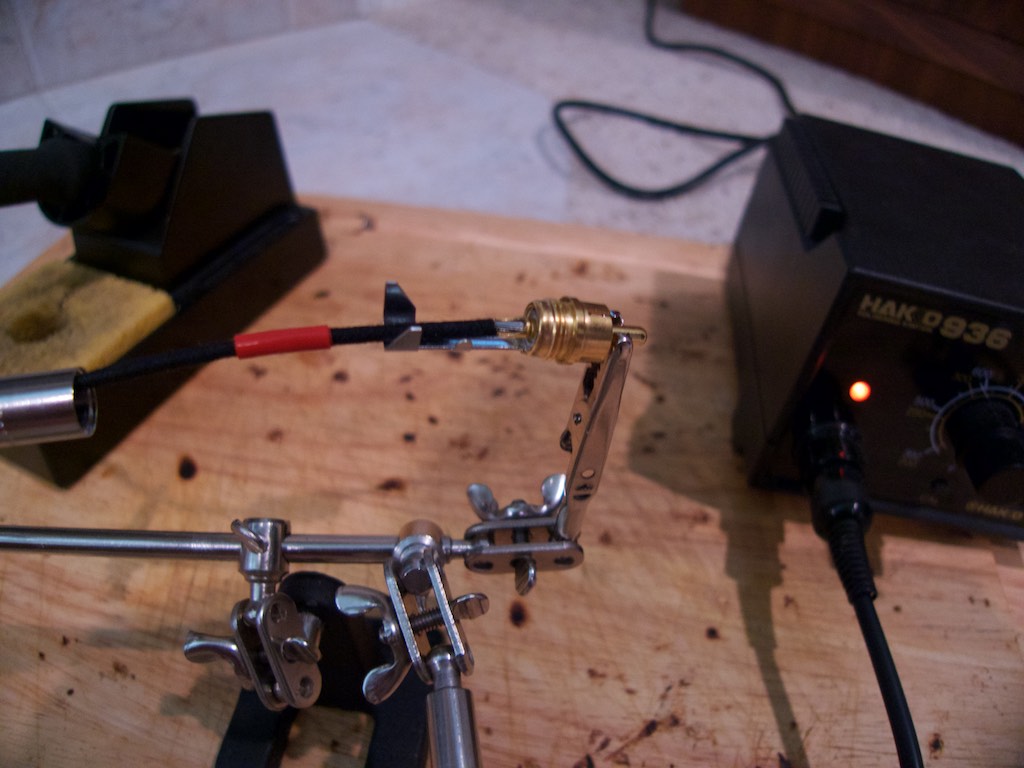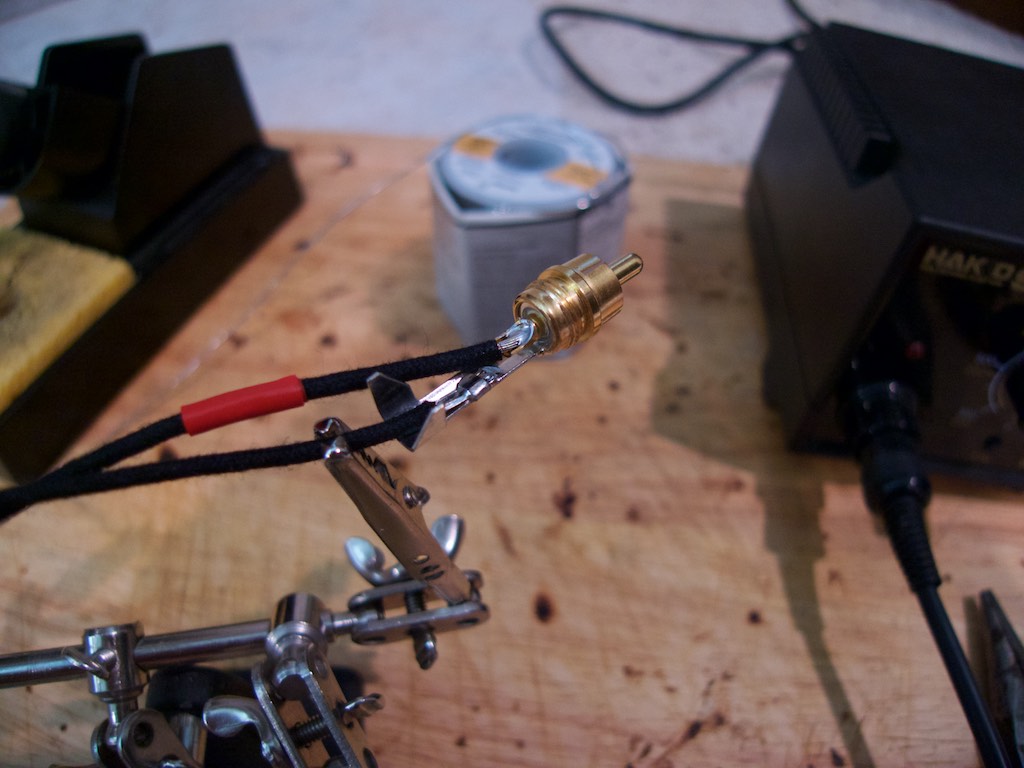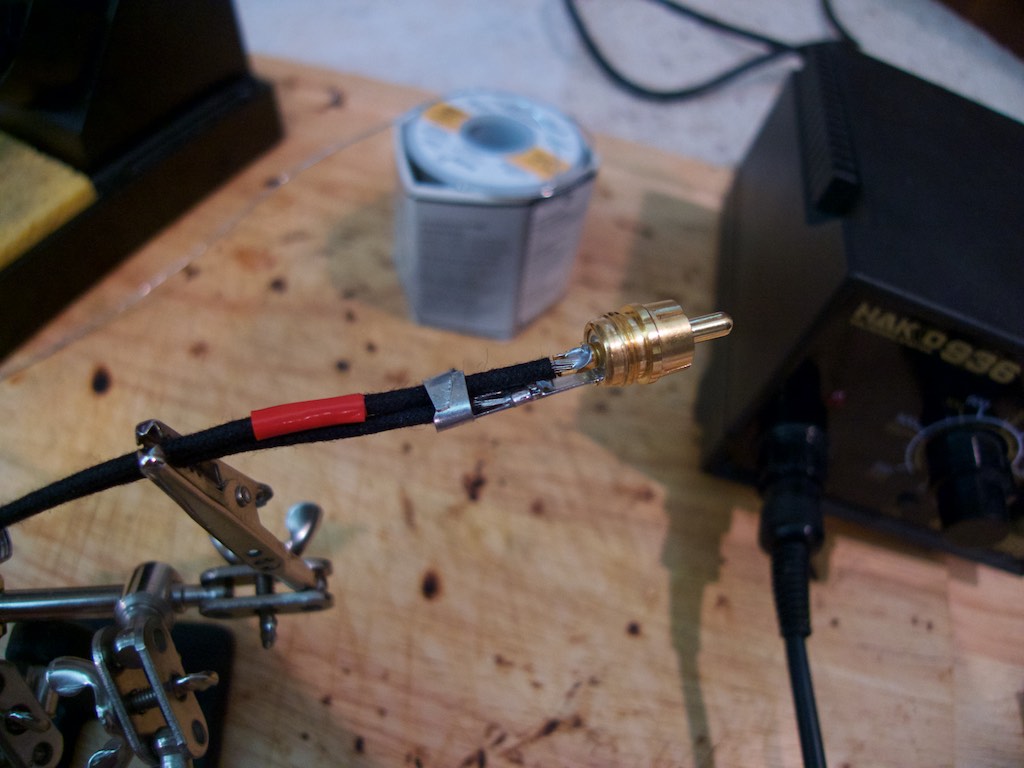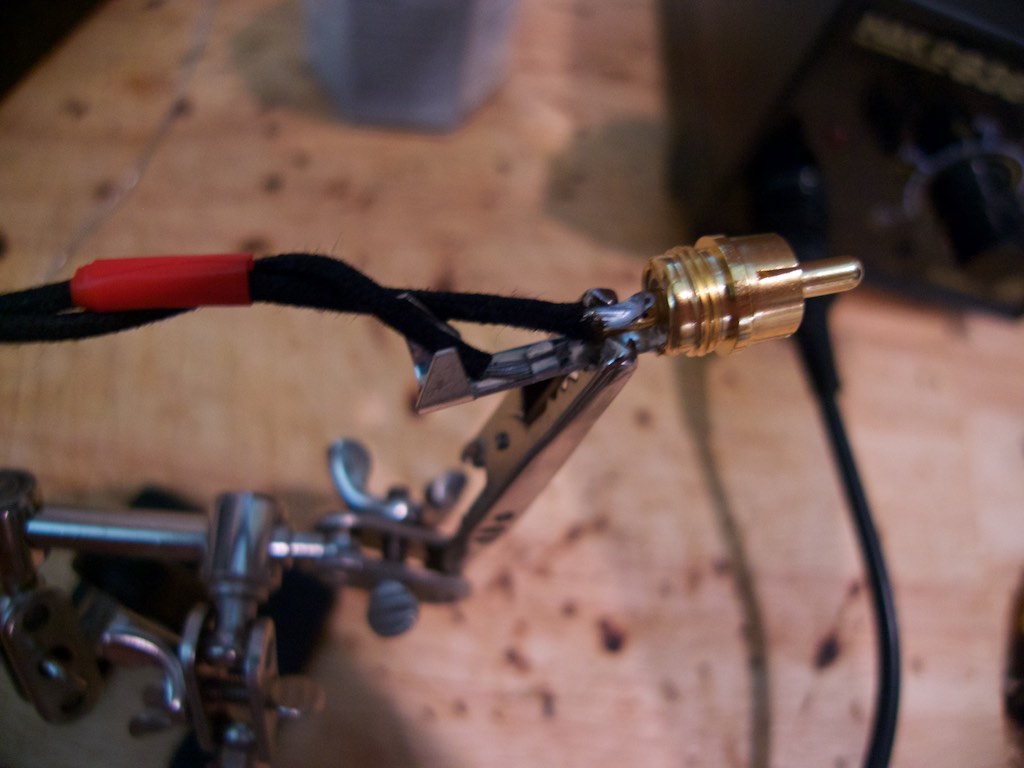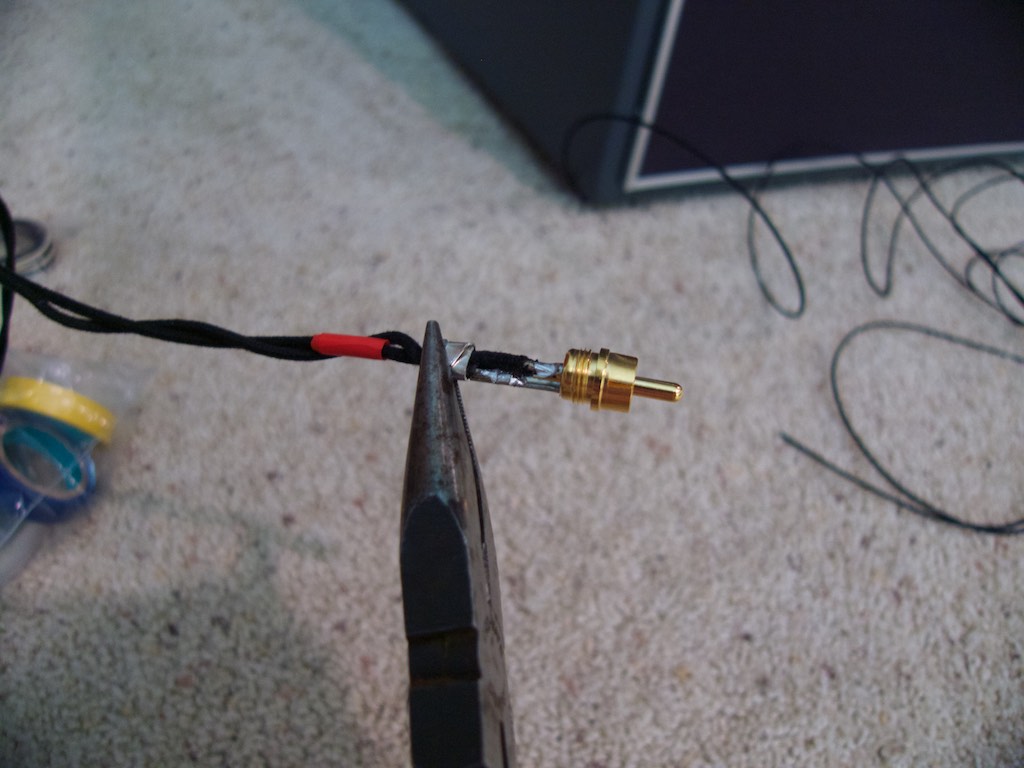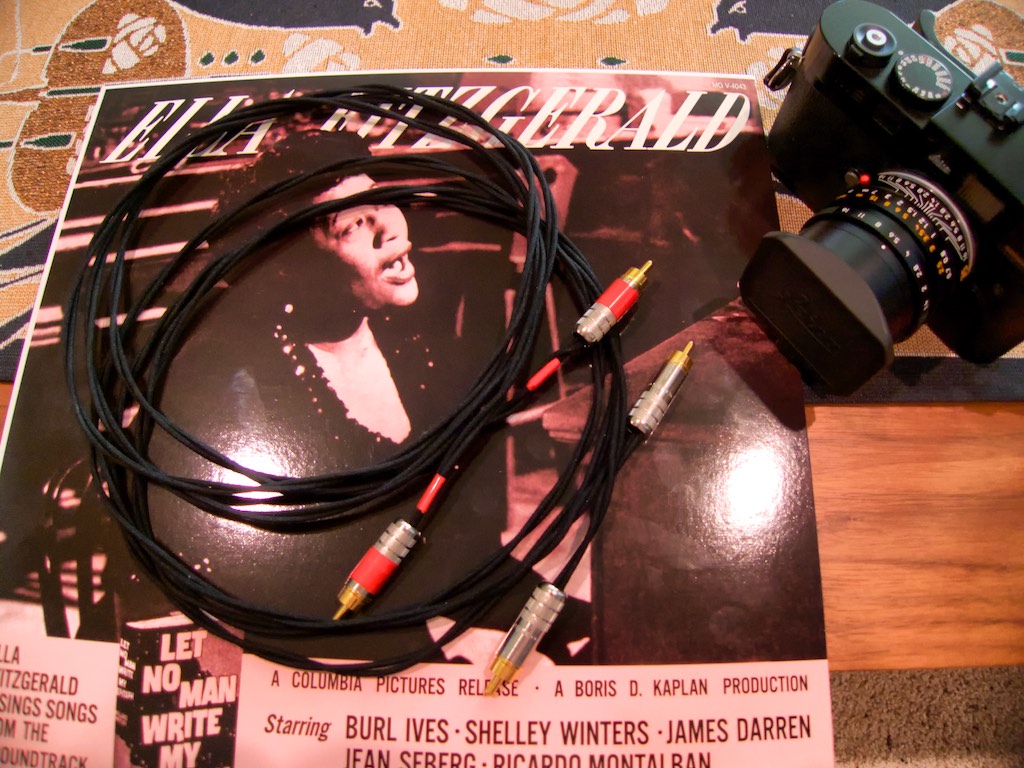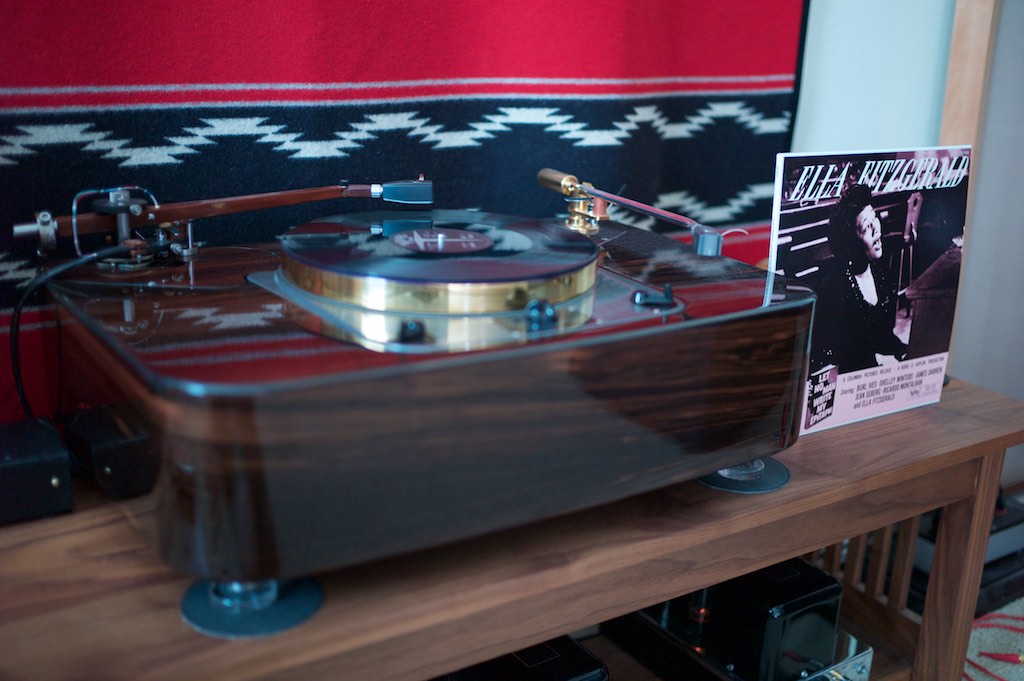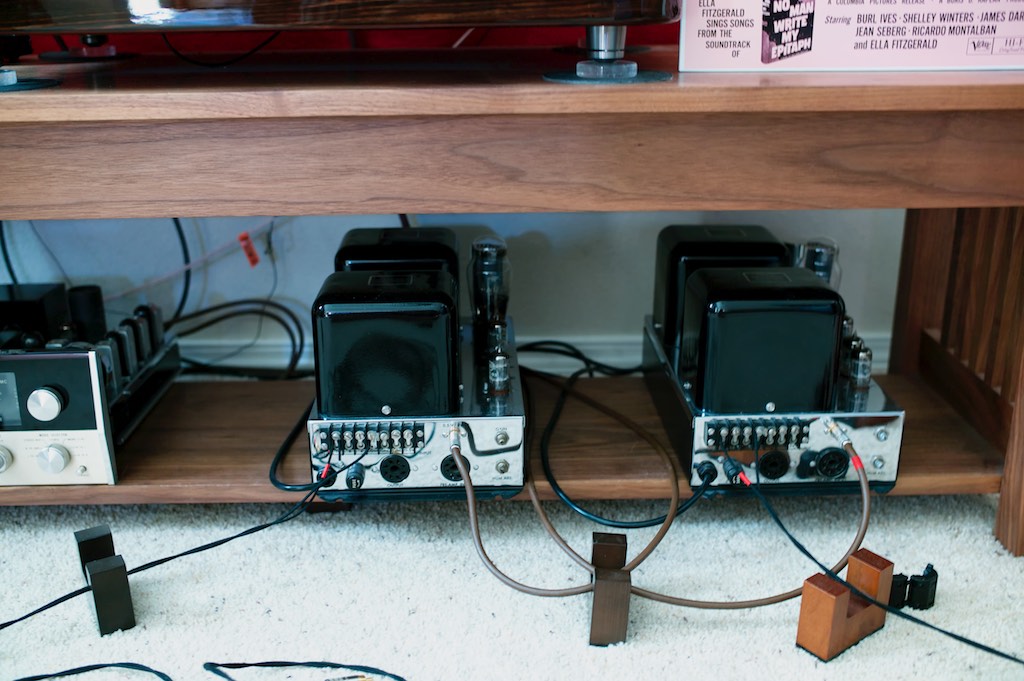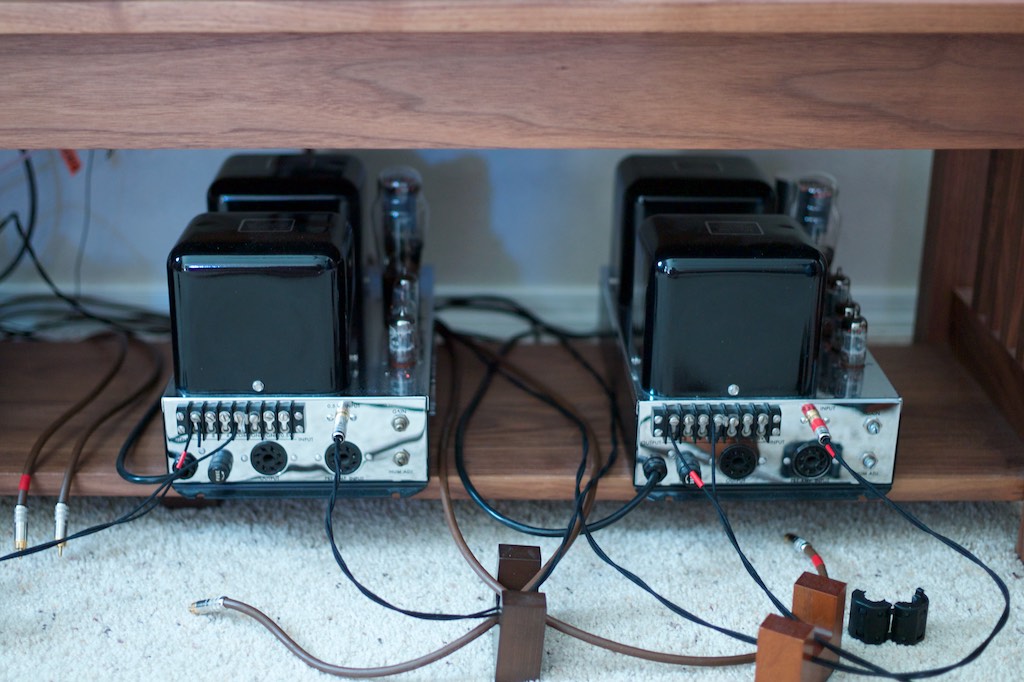I got up this morning and started a load of laundry, made some coffee, and fired up my Stokowski Altec A7 loudspeakers & SPEC RSA-M3 EX Real Sound Amplifier based system. Soon as the coffee was ready, I settled in to catch up on my correspondence while listening to the superb Jazz24 stream.
Yazaki-san’s amazing SPEC RSA-M3 EX Real Sound Amplifier matches my A7's to a 'T', and I feel really lucky that I can enjoy listening to this system, so a big shout-out to Yazaki-san and Leopold Stokowski for making this wonderful listening experience possible!
For a source I'm using the humble combination of my old MacBook, Mhdt Paradisea+ USB DAC, and my home-brew tinned-copper pushback wire USB interconnect (you guys really need to try this, give it the requisite 100 hours of run-in, and you'll end up tossing your ultra-expensive USB cables).

DIY tinned-copper pushback wire USB interconnect (foreground), my previous favorite Locus Design USB interconnect in the background.
I'm using Belden 8402 microphone cable interconnects and Western Electric WE16GA for speaker cables, along with a Sablon Audio Gran Corona power cord on the SPEC, which is a superb wire combination!
Streaming from Jazz24 it sounds freaky good!
As I was sipping my coffee I got this crazy idea of building a set of 2-meter interconnects out of the Duelund DCA16GA wire. I say 'crazy' because I tried the same thing with the Western Electric WE16GA and I didn't like it as an interconnect, instead greatly preferring the Belden 8402 microphone cable as interconnects.
But, hey, you never know, so I plugged in the soldering iron, got out my bag of Switchcraft 3502AAU RCA connectors, cut four 2-meter lengths of the Duelund DCA16GA and set to work.
Given that the Duelund DCA16GA is all black, to avoid confusion I wrapped a bit of red Peavey color coded microphone ID tape at each end of the lengths that I soldered to the Switchcraft 3502AAU center pin. You can read about it in my blog post here.
First I soldered the DCA16GA to the center pin of the Switchcraft (above) ...
... then I trimmed a little cotton insulation off another 2-meter length of the Duelund, moved the wire soldered to the center pin out of the way, then pressed down the small inner tab on the clamp terminal with a pair of needle-nose pliers on the new length of DCA16GA to secure it in place, and then soldered it securely.
I then clamped down the large clamp terminal tabs with needle-nose pliers onto the Duelund DCA16GA to hold it in place.
Then I threaded the Switchcraft handle onto the clamp terminal to secure it, then twisted the +/- legs of the DCA16GA together, slide the handle on for second termination and ...
... then I repeated the process of soldering the red-taped Duelund DCA16GA to the Switchcraft center pin ...
... then clamped the second run of DCA16GA down with the small tab on the clamp terminal and soldered it in place.
Then I secured the DCA16GA in place by crimping down the large tabs on clamp terminal.
Then I threaded the Switchcraft handle onto the clamp terminal to secure it, and then I wrapped the handles on each end with a bit of red Peavey color coded microphone ID tape to help me ID them from the left channel when connecting them to equipment.
I repeated the process to make a left channel interconnect out the the Duelund DCA16GA and ended up with the nice looking pair of 2-meter interconnects you see above.
Now I'll plug them in and give them a listen and report back a bit later.
***
Update: First I listened to the Analogue Productions 45RPM version of Ella Fitzgerald's superb Let No Man Write My Epitaph with my Belden 8402 microphone cable interconnects on my vintage McIntosh electronics & Altec A5 Voice of the Theatre loudspeakers for a baseline.
As I reported earlier, the 45RPM version of Ella Fitzgerald’s Let No Man Write My Epitaph on Verve from Analogue Productions, is really something special. Let No Man Write My Epitaph is freaky good, and definitely one of my favorite Ella albums. It’s a minimalist studio album, with Ella singing some of her favorite songs with accompaniment only by pianist Paul Smith, and it has a beautifully intimate feel to it.
With the Belden 8402 mic cable interconnects in the system Ella sounds naturally 'real' and very emotionally engaging, making it easy to relax into and enjoy the music, and because this is a Sunday morning listening adventure, I naturally started with Ella's Black Coffee.
Then I swapped out the Belden 8402 ICs and replaced them with the Duelund DCA16GA ICs I just finished. The Belden 8402 IC's I have in the system are 2-meters long and are terminated with the same Switchcraft 3502AAU RCA's I used for the 2-meter Duelund DCA16GA interconnects, the same solder was used for both, so the only difference is the wire, and that the Belden 8402's have a ton of time on them at this point.
The 2-meter Duelund DCA16GA interconnects sounded really good, especially considering their zero-hour run-in time. The Belden 8402 mic cable interconnects can sound pretty ragged at first, but when they hit the 100 hour mark they sound so naturally 'real' you don't want to touch them!
These are very preliminary impressions of course, but I'd say the zero-hour 2-meter Duelund DCA16GA ICs sounded nearly as naturally 'real' on Ella's Let No Man Write My Epitaph, as do my Belden 8402 mic cable interconnects that have a year of time on them now. Not what I was expecting really, as I expected the Duelund DCA16GA ICs to fare much worse, given my previous Western Electric WE16GA interconnects experiment.
At this early point in their run-in, the first things that came to my attention were that the Duelund DCA16GA as interconnects were harmonically richer, with more overtone development, with the musicians having a little more naturally 'real' presence, they're a little darker, and a little more transparent too, in the upper bass on through the upper midrange, than are the Belden 8402 mic cable ICs.
The Duelund DCA16GA doesn't quite match my well run-in Belden 8402 from the upper midrange up into the highs, sounding a little less smooth, and a little more aggressive, in the sibilance region of Ella's vocals, for example. Also, I think the Belden 8402 gave me more of a sense of the tempo, melody, and dynamics, than does the Duelund DCA16GA as interconnects. But it's still too early to make a judgement either way.
A really good test of anything is brass, in particular muted trumpet. If anything is amiss, brass will kick your ... fanny! My most listened to horn album these last few weeks has been The Alternate Blues on Pablo, with an all-star line-up of Clark Terry (trumpet & flugelhorn), Freddie Hubbard (trumpet & flugelhorn), Dizzy Gillespie (trumpet), Joe Pass (guitar), Ray Brown (bass), Bobby Durham (drums), and Oscar Peterson (piano), and which just blows me away with how musical and ‘real’ it sounds.
The Duelund DCA16GA interconnects sound really good on The Alternate Blues and the timbral realism was breathtaking! As when used as speaker cables, the Duelund DCA16GA used as interconnects excel with overtones, more so than the Belden 8402, which makes the music sound both richer and more colorful, giving it a vivid 'Kodachrome-like' intensity.
Ray Brown's bass playing on The Alternate Blues sounds so real, with such great tone, the Duelund DCA16GA really nails it. The same can be said of the trumpets and flugelhorns, and Joe Pass' guitar tone is stunning. But the trumpet and flugelhorns ... OMG! ... they are to die for!
The Duelund DCA16GA interconnects tone bests the Belden 8402 mic cable on this album overall. In fact, I was able to crank it up louder with the Duelund DCA16GA than I was able to when listening with the Belden 8402, and the tone still hung together superbly, which is a good sign.
Ok, it's only the first round in a twelve round bout, so it's way too early to say anything much yet, but the newcomer Duelund DCA16GA as interconnects made an impressive showing against the established pro Belden 8402 mic cable interconnects.
***
Update 8/30/2016: I'm getting a little bit more run-in time on the Duelund DCA16GA RCA interconnects I made on Sunday for the vintage McIntosh & Altec A5 Voice of the Theatre system, not a lot mind you, but maybe 10 hours or a little more now.
The upper mid-range up into the highs are transforming into a very enticing combination of ultra-natural 'real' timbral textures and ravishingly good tone, and the emphasis in the sibilance region that I was hearing early on has almost completely disappeared.
The overall presentation is warmish, beautifully musical, a little bit dark, but with a surprising amount of transparency and detail resolution, and with a vibrant presentation of tone color and musical nuance that seems to me to be the aural equivalent of a cinematic landscape of Technicolor. Very impressive!
I do have one quibble with the presentation of the DCA16GA as interconnects though, which is that the response in the bass region seems to be a bit too emphasized. I could almost overlook it because the overall presentation is so gorgeous, but it's there and noticeable. This may be because the wire gauge is a little bit big at 16AWG for this application as interconnects (the Belden 8402 uses 20AWG conductors, for example).
I suspect that if Frederik ever offers a 20AWG version of this wire for use in interconnects, it would make for perhaps the finest interconnects ever created on Planet Earth for those who cherish 'vintage tone' and 'real sound'. It's possible I may be able balance the bass response better with my A5's by fiddling with the A5's resistor values (via the Clarostat's) in the high-frequency circuit of their crossovers. I'll report back on that experiment.
Even at that, I can say the my Duelund DCA16GA interconnect experiment has yielded the most musically communicative pair of interconnects I have ever heard.
Last night I thought I'd listen to a couple of cuts of some rock & roll records that I'm very familiar with to see how things were coming along, and it turned into an hours long listening session to a stream of great albums from the Eagles, Tom Petty, CSNY, Simon & Garfunkel, Lucinda Williams, and others. I was absolutely mesmerized by the way the Duelund DCA16GA interconnects were delivering the musical performances, and while I had quibbles about the bass being a bit too dominant, the overall presentation was so musically involving that I just couldn't stop listening.
It's still early in the run-in process, so I suspect things will still change quite a lot over time, so keep checking back and I'll apprise you of my impressions as run-in continues.
Thanks for stopping by!




